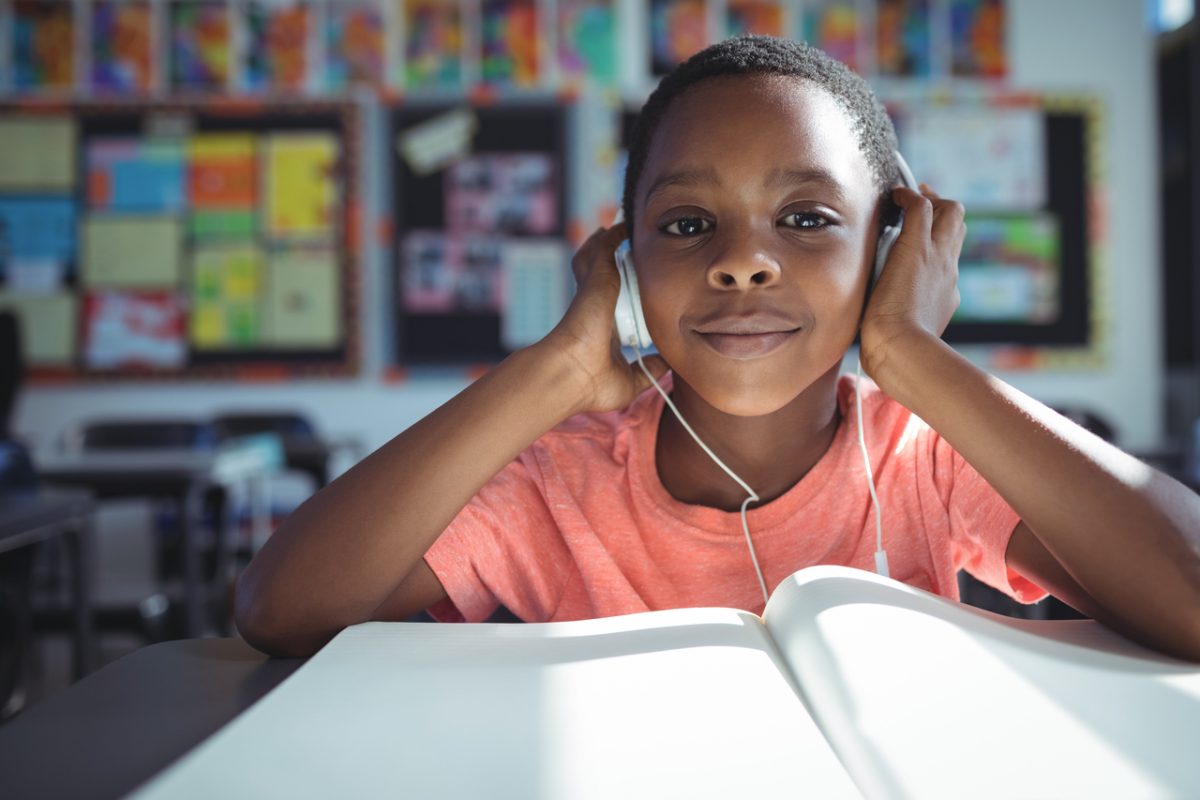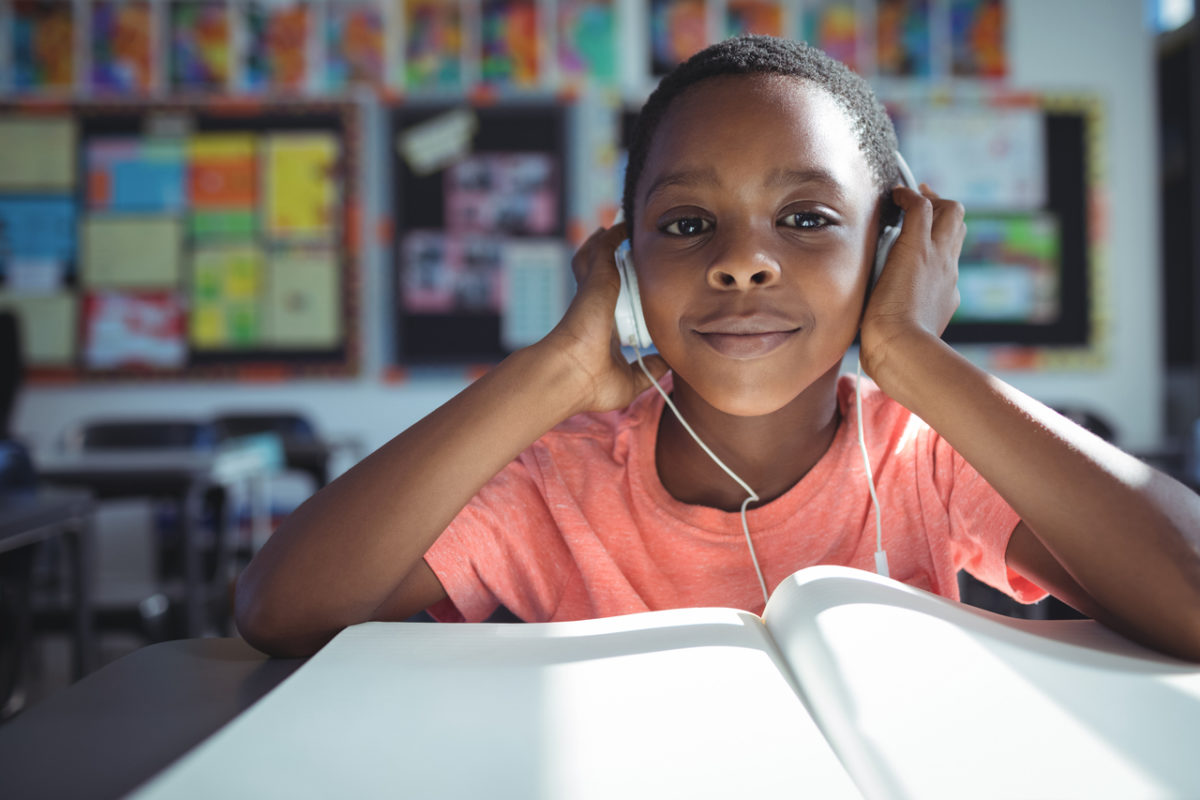Listening and reading skills are closely related, but how do they interact?
For years, schools have been chasing down the reasons behind dropping scores on the national assessment for educational progress (NAEP). In fact, in 2019, the NAEP reading assessment showed that two out of three students did not meet the standard for reading proficiency in either the fourth or the eighth grade.
Despite all of the intense focus on literacy instruction over the past two decades, Reading scores have not improved significantly overall.
But what if there is a missing piece of the literacy puzzle?
The literacy mindset
Interpretive communication consists of methods that allow a student to receive and interpret information. There has been much-focused attention on various forms of reading instruction to support students who aren’t reading on grade level.
The various literacy and reading instruction camps might find that incorporating listening strategies could be a missing link to helping students make strides in their reading comprehension since reading and listening skills are so deeply intertwined.
Think of structured reading classes with texts at a specific reading level and instruction that focuses on identifying the main idea or inferring information about a character. Students who listen to a story might try the same exercises with even more success and learn to apply those skills to their reading.
Even with this sustained focus on literacy skills, reading scores haven’t budged. Researchers are now finding that the answer may not be a sustained, isolated focus on reading comprehension of the recent past.
Where listening and reading comprehension meet
The simple view of reading, developed by Gough and Tumner in the 1980s, theorizes that students’ ability to understand what they read depends on both decoding and oral language comprehension.
In other words, a student must not only be able to look at a word and read it off the page. They must also have an understanding of the word’s meaning, its associations, and its context.
Surprisingly, many students who struggle with reading comprehension can easily comprehend a passage that they listened to and answer questions about it. When listening to a text, students don’t worry about what the word looks like on a page. They gather the information they need through listening.
Stitch and James (1984) find evidence strongly suggesting that children’s listening comprehension typically outpaces reading comprehension until the middle school years when students are mostly “reading to learn” rather than “learning to read.”
Monica Brady-Myerov, the founder of Listenwise, tells the story of listening to an NPR broadcast in the car with her seven-year-old daughter. She assumed that her daughter would be “tuning it out,“ but after listening to the piece about CIA torture, her daughter asked, “What is waterboarding?“
She had been listening the whole time and understanding it – at least mostly. What she lacked was background information and vocabulary. She probably would not have been able to comprehend a transcript of the same radio broadcast.
This is the case for many students who have been labeled struggling readers.
Boosting listening and reading comprehension
Luckily, improving listening comprehension is no more difficult than working with reading comprehension. Listenwise offers audio material paired with questions, graphic organizers, and quizzes that are intentionally similar to the tasks a reading comprehension assessment would ask of students. In fact, teachers who are new to deliberately including listening comprehension in their lessons might be surprised to see how closely their listening activities mirror reading activities.
Students listening to a podcast, for instance, would summarize the piece and identify the main idea, essential vocabulary, speaker’s purpose, point of view, et cetera. Once students begin to absorb information on the first listen, they’re really on their way toward improvement.
Suppose students can listen to and comprehend audio texts that are more advanced than they would be able to read. In that case, they are then exposed to more advanced vocabulary, ideas, and life situations that their lower reading level might afford if only reading printed texts.
A study published in 2020 found that increasing time spent teaching generalized reading strategies did not improve reading ability, but increased instructional time focused on learning content knowledge in social studies did. Students need exposure to a broad range of vocabulary and background knowledge and understanding of the world to have an easier time making sense of advanced reading material.
A trifecta of literacy
Is content-area knowledge and a solid vocabulary base the key to better reading scores overall? Right now, the answer is we don’t know.
- Listening opportunities offer access to a wider range of instructional texts;
- A more comprehensive range of texts means more background knowledge and a more substantial vocabulary base;
- A wider range of background knowledge and vocabulary improves reading comprehension.
Providing listening opportunities could be as simple as finding a radio broadcast or a podcast to replace a written news article or as involved as committing to using a monthly podcast in the classroom. Then follow up with a related written text.
Or combine them entirely! Listening while reading (LWR) is a strategy that has students read the text simultaneously along with an audio recording of the same text.
There are many benefits to having students listen to the text they’re reading while they’re reading it. For instance, ESL students increase their English fluency, and all students experience greater comprehension overall. By meeting students with both skills combined, teachers are using listening to effectively support students’ cognitive load while reading complex texts.
With listening and reading skills so closely related, it makes sense to bring them together so that the skills can begin to augment one another.
Read more research-based strategies in Brady-Myerov’s book Listen Wise: Teach Students to be Better Listeners.



